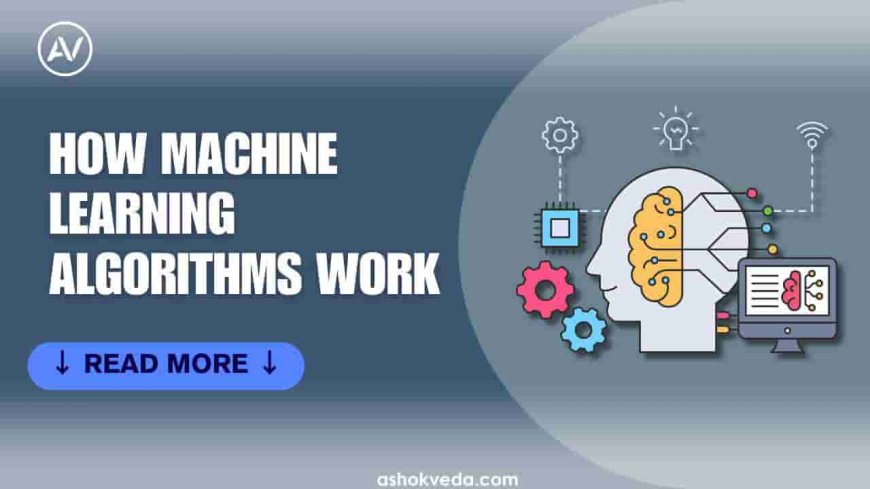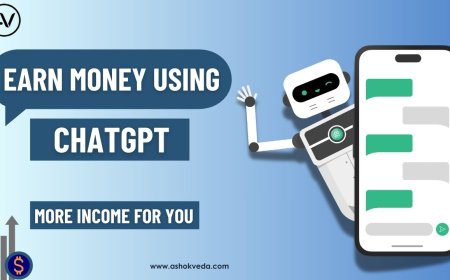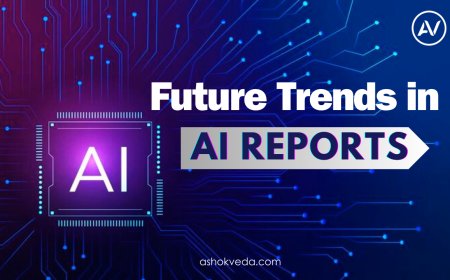How Machine Learning Algorithms Work
Explore the fundamental concepts behind machine learning algorithms, including their types, training processes, and real-world applications

Imagine you’ve just moved to a new city and want to find the best restaurants around. Instead of asking every local for recommendations, you turn to an app that suggests dining spots based on your past preferences and reviews. This app uses Machine Learning Algorithms to provide you with personalized recommendations. But how exactly do these algorithms work to make such smart suggestions?We'll analyze the fundamentals of Machine Learning Algorithms and breaking complicated concepts into small sections.
Understanding how machine learning algorithms work involves exploring different machine learning models and the algorithm training process.This means being familiar with Data Science and Predictive Analytics algorithms as well as understanding the differences between supervised and unsupervised learning approaches and reinforcement learning algorithms. will also analyze the machine learning workflow, with particular attention to elements such as data preprocessing stages, predictive modeling methodologies, model training and testing, and algorithm performance evaluation.
What Are Machine Learning Algorithms?
Machine learning algorithms are computational models designed to learn from data and make predictions or decisions without being specifically designed for every purpose. In simple terms, these algorithms find patterns in data and use those patterns to provide new data insights or forecasts.
A machine learning model trained on photos of cats and dogs, for example, can be trained to differentiate between the two species. After being trained, this model can accurately assess and categorize new photos using the features it has learned.
Types of Machine Learning Algorithms
Machine learning algorithms generally fall into three categories
1. Supervised Learning Techniques
Supervised learning techniques involve training algorithms on labeled data, where the outcome is known. For example, regression and classification algorithms are common predictive analytics algorithms in this category. A predictive modeling technique might be used to forecast house prices based on historical data.
2. Unsupervised Learning Methods
Unsupervised learning methods work with unlabeled data to identify patterns and groupings. Algorithms in this category include clustering and dimensionality reduction methods. For instance, clustering algorithms might group similar customer profiles based on purchasing behavior, providing valuable insights for marketing strategies.
3. Reinforcement Learning Algorithms
Reinforcement learning algorithms train models to make sequences of decisions by receiving rewards or penalties. This approach is often used in areas like game playing or robotic control, where the algorithm refines its strategy over time through trial and error.
How Machine Learning Algorithms Work- A Step-by-Step Overview
1. Data Collection
The initial step in understanding how machine learning algorithms work involves Data Collection. Data can come from various sources such as databases, sensors, or online interactions. The quality and quantity of this data are crucial for the effectiveness of the machine learning workflow.
2. Data Preprocessing
Before feeding data into a machine learning model, it must undergo data preprocessing steps. This includes handling missing values, normalizing data, and transforming variables to ensure the algorithm can effectively analyze the information. Proper machine learning data preparation is essential for accurate model performance.
3. Choosing a Model
Selecting the appropriate model is a critical aspect of the algorithm training process. Depending on the task, different machine learning models may be used. For instance, predictive analytics algorithms might be employed for forecasting, while classification algorithms are suited for tasks like email filtering.
4. Training the Model
Training involves feeding the prepared data into the chosen model. The algorithm adjusts its internal parameters to minimize errors in its predictions. This phase is where the algorithm develops its predictive capabilities through model training and testing.
5. Testing and Validation
Once the model is trained, it’s tested with new data to evaluate its performance. This step helps ensure the model generalizes well to unseen data. Algorithm performance evaluation and model validation techniques such as cross-validation are used to assess accuracy and reliability.
6. Making Predictions
After validation, the machine learning model is ready to make predictions or decisions based on new, unseen data. For example, a recommendation system might suggest products based on a user's previous interactions, leveraging predictive modeling techniques to tailor suggestions.
7. Continuous Learning
Continuous learning allows machine learning models to adapt over time. As new data becomes available, the algorithm can be retrained to refine its predictions and adapt to changing patterns, ensuring ongoing relevance and accuracy.
Examples of Machine Learning Algorithms in Action
-
Recommendation Systems - Platforms like Netflix and Amazon use machine learning algorithms to suggest content based on user behavior and preferences. These predictive analytics algorithms enhance user experience by providing personalized recommendations.
-
Fraud Detection - Financial institutions employ machine learning algorithms to detect fraudulent transactions. By analyzing transaction patterns and identifying anomalies, these data science algorithms help prevent financial fraud.
-
Image Recognition - Machine learning models are extensively used in image recognition technologies. For instance, photo apps can automatically tag individuals by learning to recognize their faces using feature engineering in machine learning.
-
Natural Language Processing (NLP) - NLP algorithms power voice assistants like Siri and Alexa. These algorithms analyze and interpret human language, allowing systems to understand and respond to spoken commands effectively.
Challenges in Machine Learning Algorithms
Although there are benefits, machine learning algorithms have a number of drawbacks
-
Data Quality - Poor-quality data can undermine model accuracy. Ensuring clean and relevant data is crucial for effective performance.
-
Overfitting - This occurs when a model performs well on training data but poorly on new data. Balancing complexity is key to avoiding overfitting.
-
Bias - Algorithms can learn biases present in training data, leading to skewed results. Identifying and mitigating biases is essential for ethical machine learning practices.
-
Computational Resources - Training complex algorithms often requires significant computational power, which can be a barrier for some organizations.
The Future of Machine Learning Algorithms
As technology progresses, machine learning algorithms are expected to become even more advancedAdvancements like improved algorithmic learning techniques and atomic computing will increase the future potential of machine learning, making it more important across different industries.
Understanding how machine learning algorithms work offers insightful observations about the technologies changing the globe. These methods are essential to many different applications, ranging from data collection and preprocessing to model training and prediction. Understanding these foundational concepts will help you better understand how machine learning has impacted contemporary technology and look at how you might use these tools in your own work.
Whether you're a data scientist, a business professional If you're a business professional or simply interested in technology, understanding how machine learning algorithms operate will help you better appreciate their potential and useful applications in the future.





































